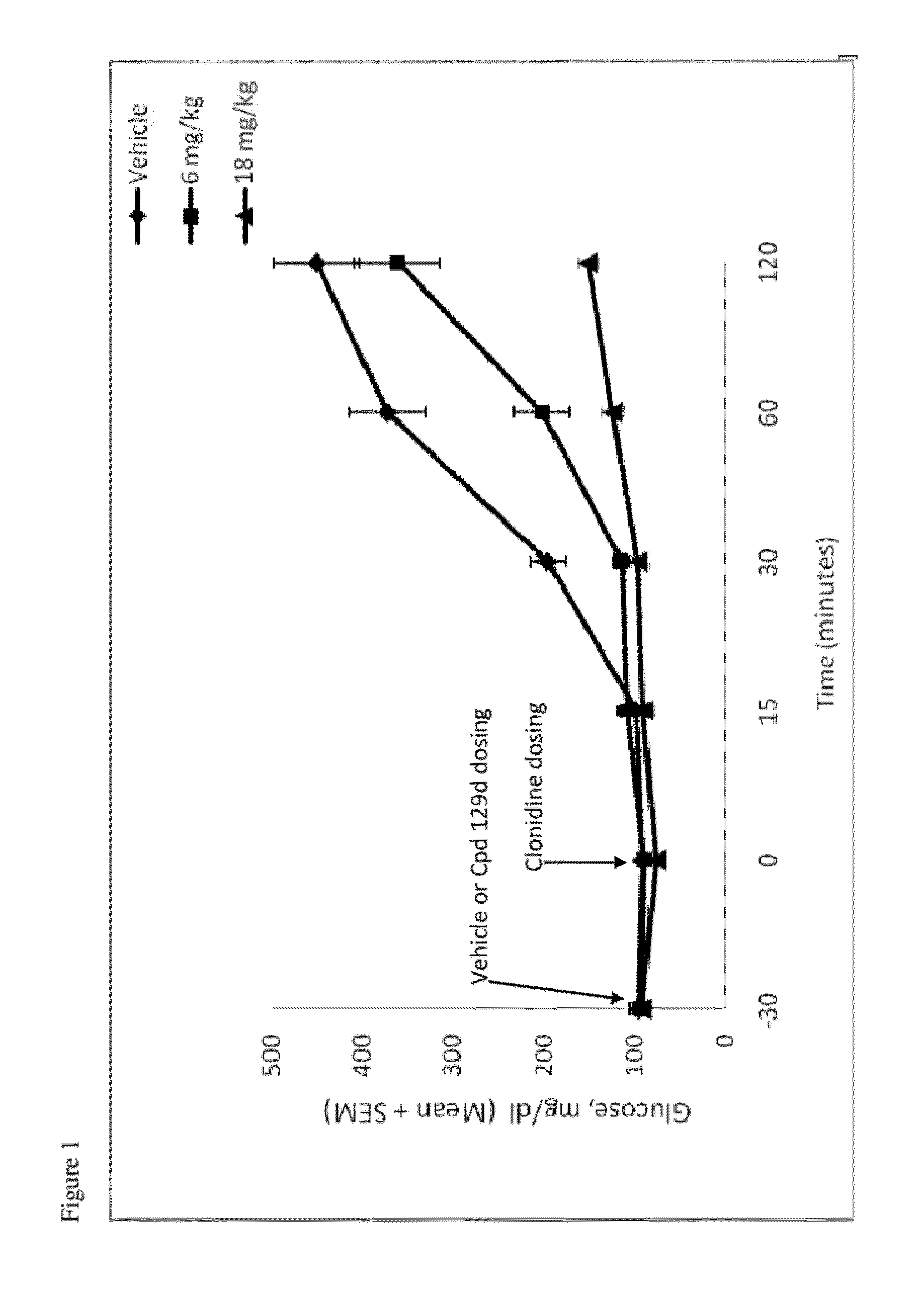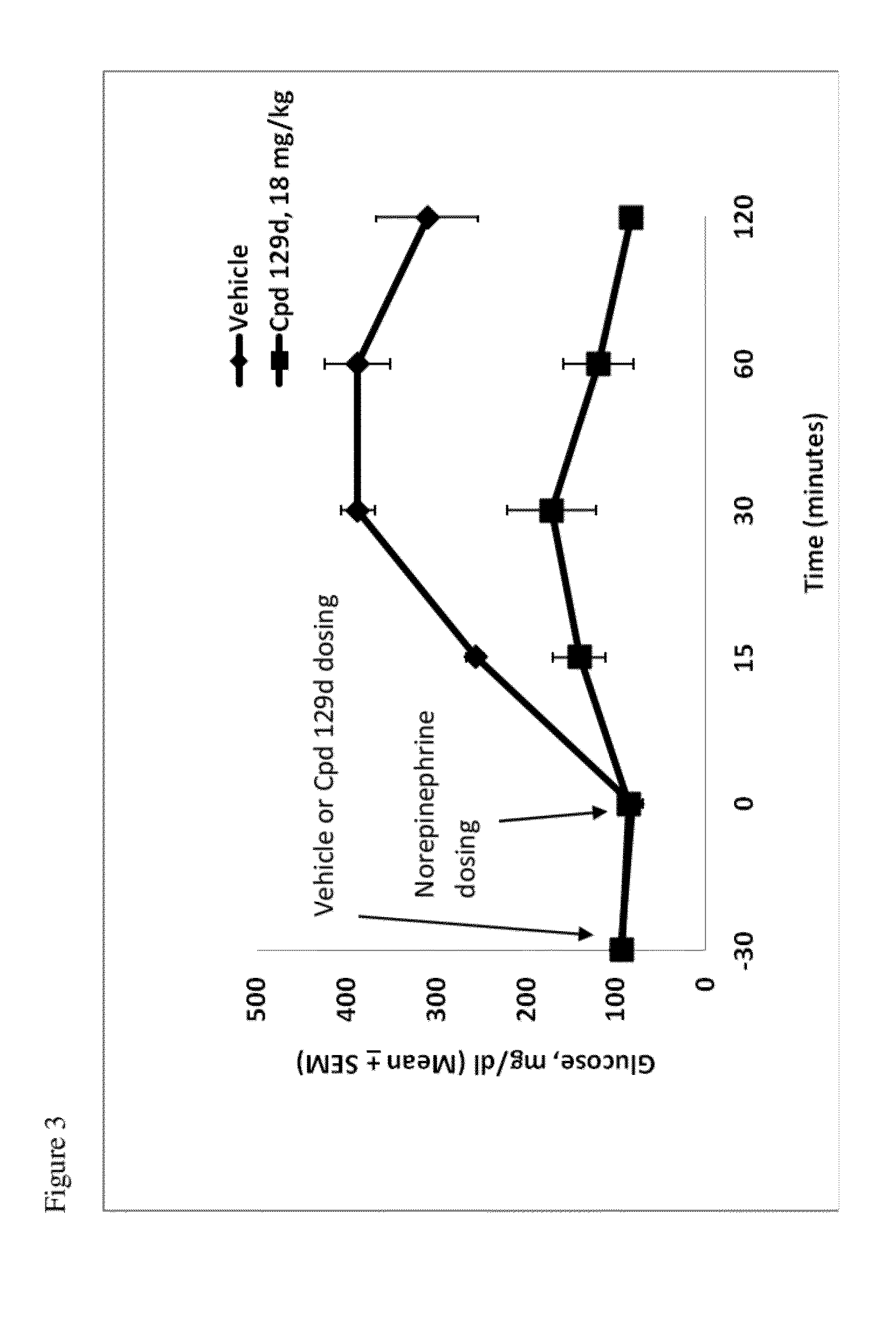Compounds and methods of treating diabetes
a technology of compound and diabetes, applied in the field of compound and diabetes treatment, to achieve the effect of increasing insulin secretion
- Summary
- Abstract
- Description
- Claims
- Application Information
AI Technical Summary
Benefits of technology
Problems solved by technology
Method used
Image
Examples
example h1
General Method for the Chiral HPLC Separation and Characterization of Compounds that were Synthesized Initially as a Mixture of Enantiomers
[1203]Crude or in some cases partially purified (normal or reverse phase HPLC) mixtures of enantiomers were analyzed by analytical chiral HPLC methods. Once adequate separation was achieved, larger quantities of the mixtures were separated using preparative scale columns as shown below for Compound Nos. 138a and 138b. Separation was followed by removal of solvents on a rotary evaporator to accomplish the isolation of the individual single enantiomers. In some cases where appropriate, after removal of solvent, the samples were lyophilized. After isolation, each individual enantiomer was further analyzed by analytical (reverse phase and chiral) HPLC, LCMS and NMR. When final products were converted to salts, final characterization of the compounds was carried out after conversion to the salt for each enantiomer.
[1204]Analytical Chiral HPLC of Compo...
example h2
General Method for the Chiral HPLC Separation and Characterization of Compounds that were Synthesized Initially as a Mixture of Diastereomers
[1206]Crude or in some cases partially purified (normal or reverse phase HPLC) mixtures of diastereomers were analyzed by analytical chiral HPLC methods. Once adequate separation was achieved, larger quantities of the mixtures were separated using preparative scale columns as shown below for Compound Nos. II-149a-d. Separation was followed by removal of solvents on a rotary evaporator to accomplish the isolation of the individual single diastereomers. In some cases where appropriate, after removal of solvent, the samples were lyophilized. Once each individual diastereomer was isolated they were further analyzed by analytical (reverse phase and chiral) HPLC, LCMS and NMR. When final products were converted to salts, final characterization of the compounds was carried out after conversion to the salt for each diastereomer.
[1207]Analytical Chiral ...
example 1
Preparation of Compound Nos. 1, 1a and 1b
[1215]Sodium hydride (1-3 equiv.) was added to a solution of 8-chloro-2,3,4,5-tetrahydro-2-methyl-1H-pyrido[4,3-b]indole (1.0 equiv.) in DMF and heated to 120° C. for 1 h with stirring. The reaction mixture was cooled to 0° C. and 4-(2-methyloxiran-2-yl)pyridine (2-7.5 equiv.) was added dropwise over 5 min. The temperature was raised to 120° C. and stirred for 2 h. The reaction mixture was cooled to RT and partitioned between EtOAc and water. The organic layer was separated and the aqueous layer was extracted with EtOAc. The combined organic layers were washed with water and followed by brine, dried over anhydrous sodium sulfate and concentrated under vacuum to provide the crude product. The product was purified by flash column chromatography over silica gel (230-400 mesh, deactivated with 1% triethylamine / hexane) using a gradient of 5 to 15% MeOH / EtOAc to yield the free base. The pure compound was converted to its oxalate salt. The analytica...
PUM
| Property | Measurement | Unit |
|---|---|---|
| Time | aaaaa | aaaaa |
| Time | aaaaa | aaaaa |
| Time | aaaaa | aaaaa |
Abstract
Description
Claims
Application Information
 Login to View More
Login to View More - R&D
- Intellectual Property
- Life Sciences
- Materials
- Tech Scout
- Unparalleled Data Quality
- Higher Quality Content
- 60% Fewer Hallucinations
Browse by: Latest US Patents, China's latest patents, Technical Efficacy Thesaurus, Application Domain, Technology Topic, Popular Technical Reports.
© 2025 PatSnap. All rights reserved.Legal|Privacy policy|Modern Slavery Act Transparency Statement|Sitemap|About US| Contact US: help@patsnap.com



